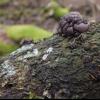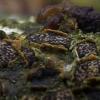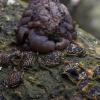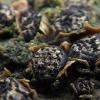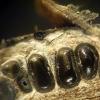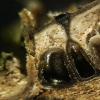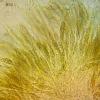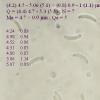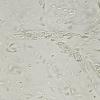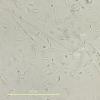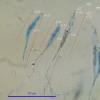
03-09-2025 21:59
Philippe PELLICIERLa Léchère, Col de la Madeleine, alt 1970m, au s

07-09-2025 11:34
 Zuzana Sochorová (Egertová)
Zuzana Sochorová (Egertová)
Hello,I have identified this fungus as Hymenoscyph

02-09-2025 11:34
Thomas Læssøehttps://svampe.databasen.org/observations/10527903

05-09-2025 09:32
 Nicolas VAN VOOREN
Nicolas VAN VOOREN
Bonjour, hi everyone,Do you know where the fungari

05-09-2025 18:53
 Robin Isaksson
Robin Isaksson
Hi! Spores 1 septate; 12-13 x 3um Hairs 35-75

04-09-2025 20:11
Åge OterhalsSaccobolus on dear droppings. Can any of you confi
Diatrype ?
Mirek Gryc,
28-01-2020 08:49
Hi
A few days ago I found on the branch Quercus, Tremella moriformis. Basically fruiting bodies immature and I could not find spores but other characteristics show that this is the species.
As you know, Tremella are parasitic species. And that's what I have a problem with. I would like to determine on which mushroom it parasites, but my knowledge about them is in this case insufficient :(
I was looking among Diatrype. However, the spores do not match any of the species. In fact, 99% of spores have a length slightly below 5µm and their width does not exceed 1µm.
In the picture only a few examples of measurements but in fact I measured a much larger number of spores.
Is it possible that I measure immature spores. I took a sample from the sporocarps or maybe you need to print spores ???
I was not able to observe the reaction to iodine. I tried directly in Lugol and after previous treatment with a KOH sample. In both cases negative.
Thank you in advance for any hints
Mirek
A few days ago I found on the branch Quercus, Tremella moriformis. Basically fruiting bodies immature and I could not find spores but other characteristics show that this is the species.
As you know, Tremella are parasitic species. And that's what I have a problem with. I would like to determine on which mushroom it parasites, but my knowledge about them is in this case insufficient :(
I was looking among Diatrype. However, the spores do not match any of the species. In fact, 99% of spores have a length slightly below 5µm and their width does not exceed 1µm.
In the picture only a few examples of measurements but in fact I measured a much larger number of spores.
Is it possible that I measure immature spores. I took a sample from the sporocarps or maybe you need to print spores ???
I was not able to observe the reaction to iodine. I tried directly in Lugol and after previous treatment with a KOH sample. In both cases negative.
Thank you in advance for any hints
Mirek
Alain GARDIENNET,
28-01-2020 09:24
Re : Diatrype ?
Hi Mirek,
Asci seem multispored. Please see within Diatrypella genus, especially compare to D. quercina.
Alain
Mirek Gryc,
28-01-2020 09:46
Re : Diatrype ?
Hi Alain
Oh yes, asci are multispored :)
Still wondering about the small size of the spores?
Thank you and best regards
Mirek
Oh yes, asci are multispored :)
- so there will be Diatrypella!
Still wondering about the small size of the spores?
Later I will try to calibrate the measurements again, maybe something has changed in the settings?
Thank you and best regards
Mirek
Eduard Osieck,
28-01-2020 10:16
Re : Diatrype ?
Yes, obviously Diatrypella but the most likely on Quercus D. quercina has often more curved spores which are much larger: 8-12 micron. It could be D. intermedia with spores only 3-5 micron. But see Vasilyeva et al. 1996 (link see www.verspreidingsatlas/0593020 > tab “artikelen (3)” on the right). This species is according to these authors not very well documented.
Eduard
Eduard
Alain GARDIENNET,
28-01-2020 11:12
Re : Diatrype ?
Yes, Eduard, you're right. I haven't precisely searched.
Alain
Mirek Gryc,
28-01-2020 15:57
Re : Diatrype ?
Thank you both for your help!
However, with my little knowledge about these mushrooms species I can not determine. None of the species described match my.
Diatrypella intermedia should have short asci. In my asci they are long so it's probably also not this species?
I am also posting a photo with the samples of dimensions.
Judge for yourself.
However, with my little knowledge about these mushrooms species I can not determine. None of the species described match my.
Diatrypella intermedia should have short asci. In my asci they are long so it's probably also not this species?
I am also posting a photo with the samples of dimensions.
Judge for yourself.
I will try to get other samples from Quercus. After the storm in 2016, a lot of substrate remained in the forest. Until now, old Quercus have remained broken in the forest.
Regards
Mirek
Mirek Gryc,
30-03-2020 18:04
Re : Diatrype ?
Hi
Keeping in mind this thread, yesterday I downloaded a piece of oak tree with Diatrypella fruiting bodies.
Microscopic features identical to those in the collection presented above. Therefore, I ask myself if I did everything right. All features match except ascus length. Or maybe I'm measuring wrong? Do we measure the total length of ascus at Diatrypella? I met in some descriptions where the length of the base is given separately. Are we therefore only measuring the part containing the spores?
If so, these collections would match D. intermedia!
Mirek
Microscopic features identical to those in the collection presented above. Therefore, I ask myself if I did everything right. All features match except ascus length. Or maybe I'm measuring wrong? Do we measure the total length of ascus at Diatrypella? I met in some descriptions where the length of the base is given separately. Are we therefore only measuring the part containing the spores?
If so, these collections would match D. intermedia!
Mirek
Eduard Osieck,
03-04-2020 22:23
Re : Diatrype ?
Hi
The length of asci with long stipes are often given “p. sp.” which means that the length refers to the (wide) part with the spores. That makes sense because such long stipes are often broken and seldom complete.
Eduard
The length of asci with long stipes are often given “p. sp.” which means that the length refers to the (wide) part with the spores. That makes sense because such long stipes are often broken and seldom complete.
Eduard
Mirek Gryc,
04-04-2020 08:07
Re : Diatrype ?
Hi Eduard
Oh yes you are right!
My knowledge of foreign languages is poor and that is why I sometimes ask silly questions.
I reviewed the materials on D. intermedia again and it turns out that Von Larissa N. Vasilyeva gives the length of ascus without stem for this species: "
pars sporifera des Ascus nur 35-40 um lang; ".
So mine fit into this genre.
Thank you very much
Mirek
Oh yes you are right!
My knowledge of foreign languages is poor and that is why I sometimes ask silly questions.
I reviewed the materials on D. intermedia again and it turns out that Von Larissa N. Vasilyeva gives the length of ascus without stem for this species: "
pars sporifera des Ascus nur 35-40 um lang; ".
So mine fit into this genre.
Thank you very much
Mirek


